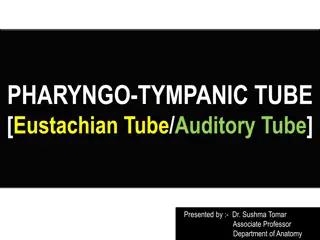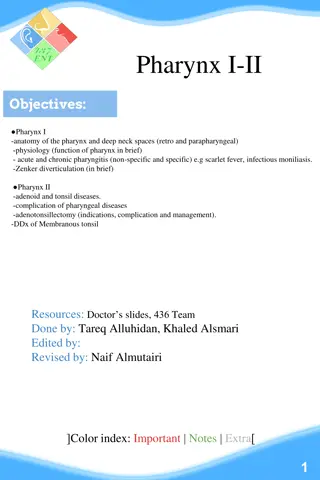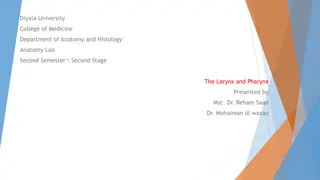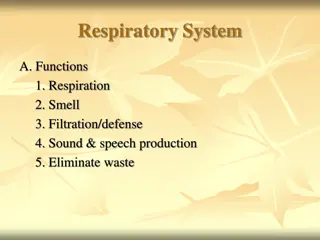Anatomy of the Pharyngo-Tympanic Tube (Eustachian Tube) Explained
The pharyngo-tympanic tube, also known as the Eustachian tube or auditory tube, is a vital structure connecting the nasopharynx with the tympanic cavity. It plays a crucial role in maintaining air pressure equilibrium on both sides of the tympanic membrane. Comprising bony and cartilaginous parts, i
0 views • 14 slides
Klebsiella Species: Characteristics and Pathogenicity
Klebsiella species, such as K. pneumoniae and K. oxytoca, are gram-negative bacilli commonly found in the microbiota of the intestines, nasopharynx, and feces. They exhibit distinct characteristics like pink mucoid colonies on MacConkey's agar and are known to cause both community-acquired and hospi
0 views • 24 slides
Pharynx Anatomy and Physiology Overview
Pharynx serves as a crucial space connecting respiratory and digestive systems, divided into nasopharynx, oropharynx, and laryngopharynx. It houses important structures like mucous membrane, submucosa, muscular layers, and neurovasculature. Understanding pharynx anatomy is essential for diagnosing a
0 views • 20 slides
Anatomy of the Pharynx: Structure and Function
The pharynx is a musculomembranous tube that connects the nasal and oral cavities to the larynx and esophagus. It is divided into three parts: nasopharynx, oropharynx, and laryngopharynx, each with unique features and functions. Muscles like pharyngeal constrictors and palatopharyngeus play a crucia
0 views • 31 slides
Overview of the Respiratory System Functions and Anatomy
The respiratory system has vital functions such as respiration, smell, filtration/defense, sound & speech production, and waste elimination. It consists of external (root, bridge, apex, and nostrils) and internal components (nasal cavity, pharynx, larynx). The nose/nasal cavity provides an airway fo
0 views • 37 slides




